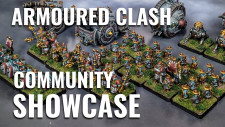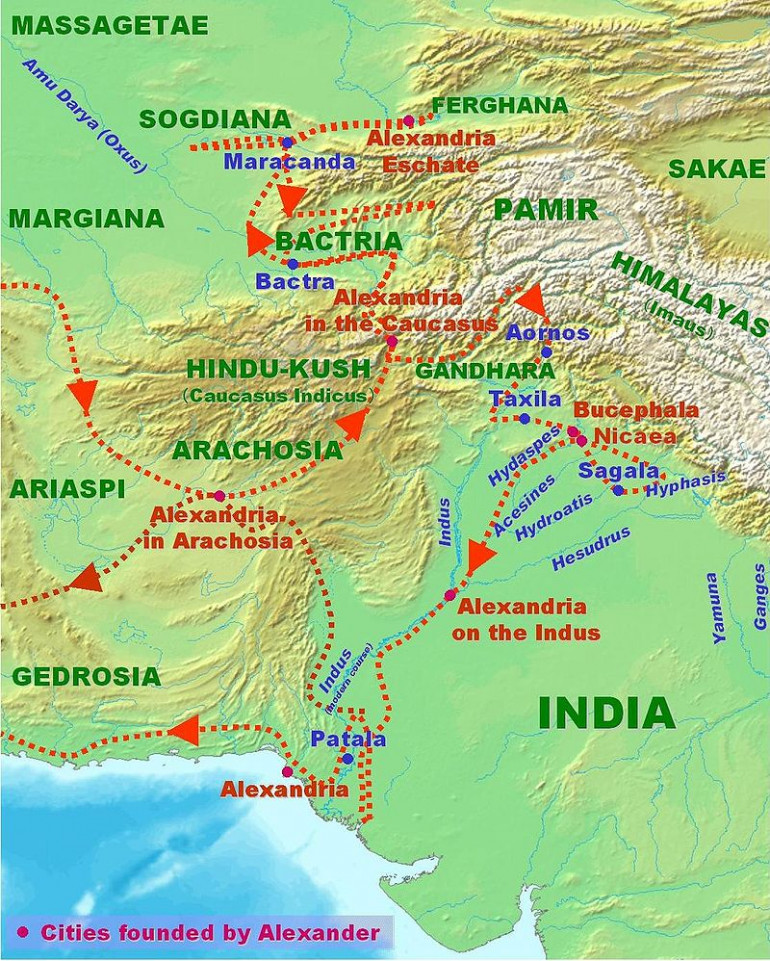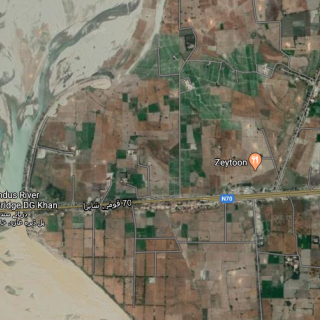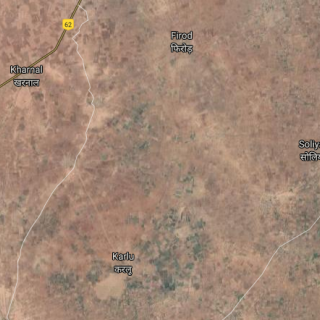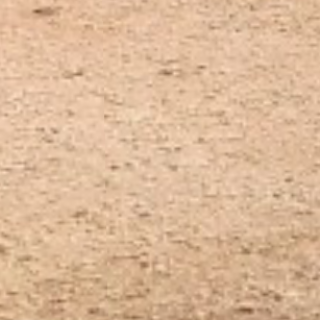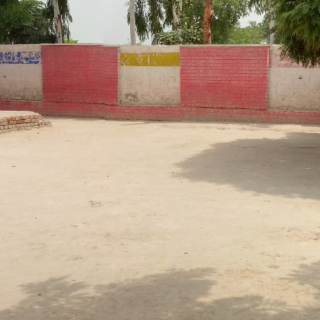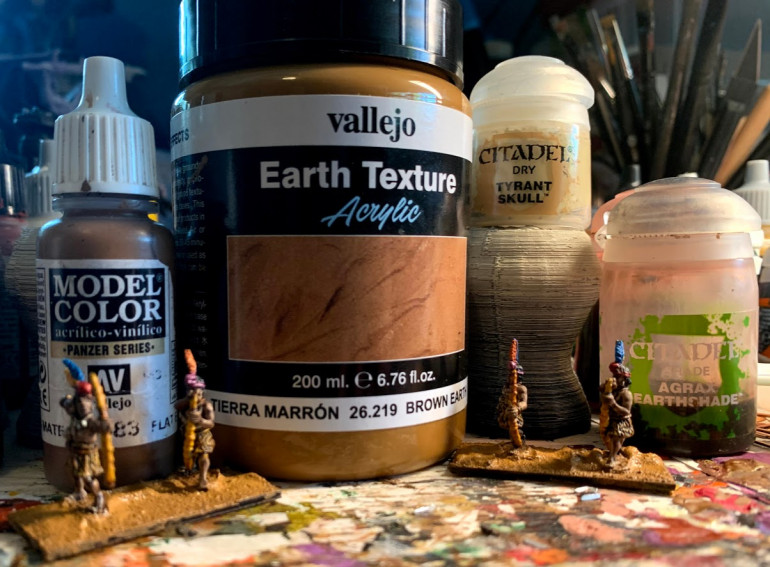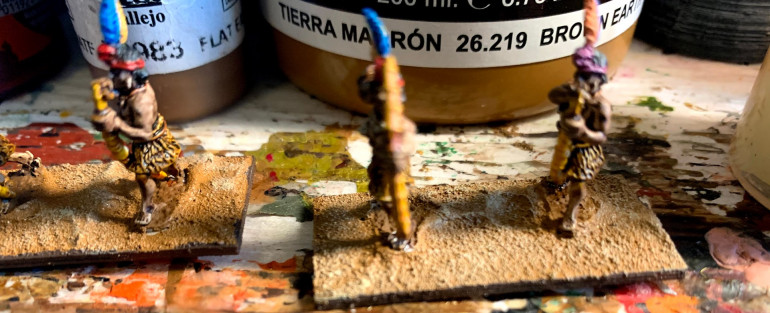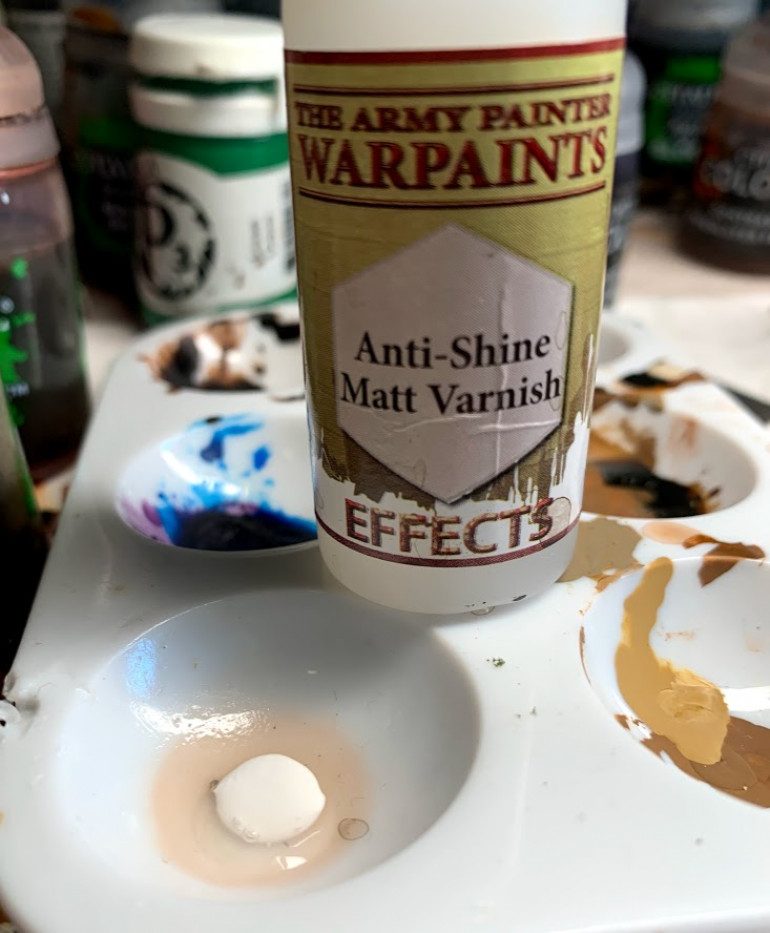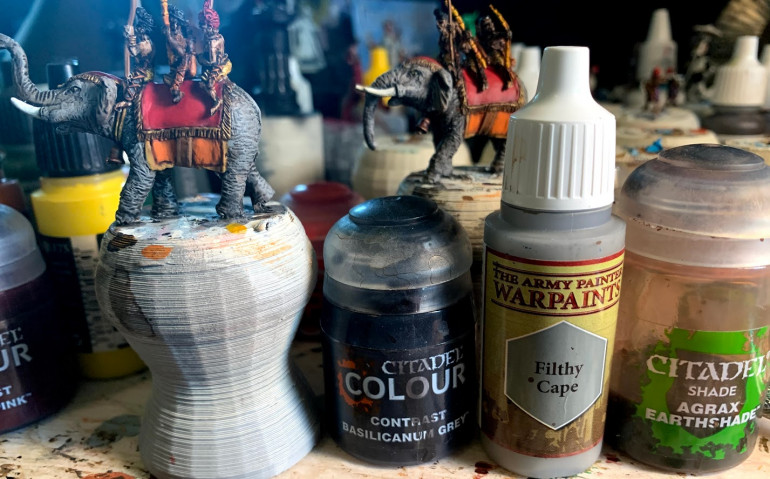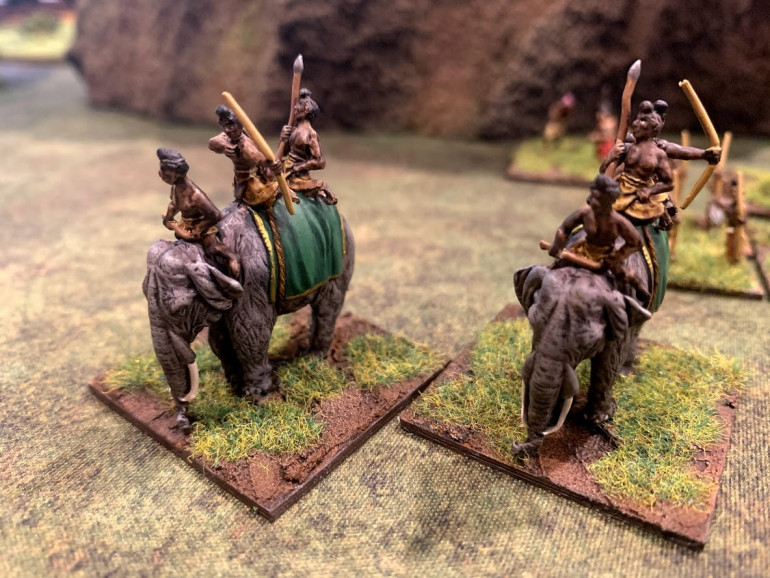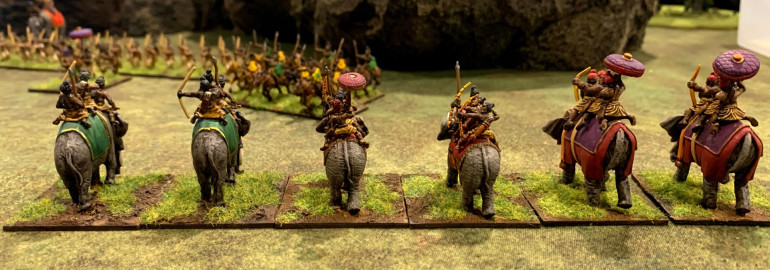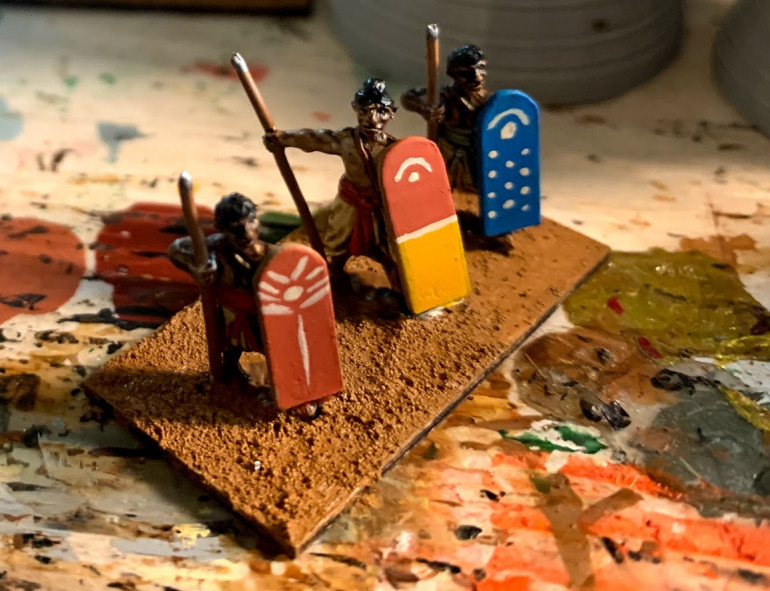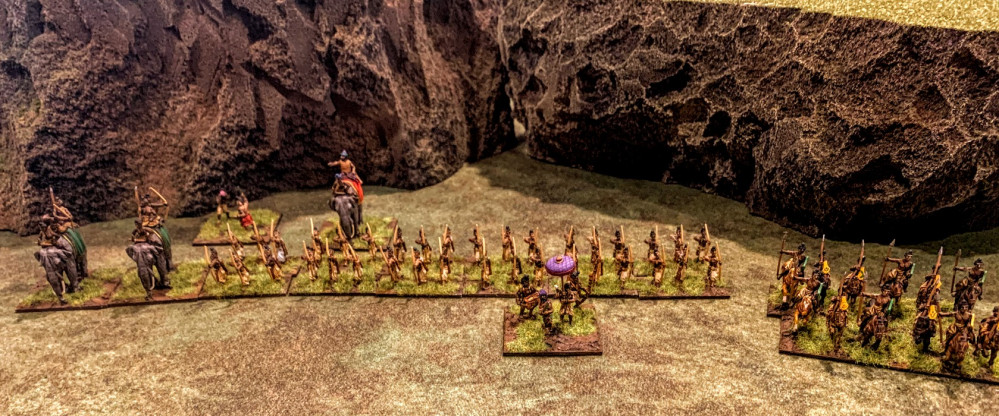
Classical Indians for MEG
Recommendations: 66
About the Project
A 15mm Classical Indian Army for ad Mortem et Gloriam. Minis sourced from multiple manufacturers including Essex, Magister Militum, and Xyston. Painted with a combination of contrast and traditional paints.
Related Game: Mortem Et Gloriam
Related Genre: Historical
This Project is Active
A Pseudo Scientific Sermon on Indian Dirt & Basing Basics
A Less Than Scientific Examination of Indian Dirt
I have spent a perverse amount of time thinking about dirt if the course of my hobby career. I used to ask questions in forums like “what color is the dirt in France,” in an attempt to get the correct colored dirt for bases. When I went to a some years ago, Europe I even considered taking some dirt home with me, but settled on taking some pictures.
So what color is the dirt of India? I am going to give you some ideas on how to figure that out and how and why I think you can ignore the dirt science entirely.
Dirt is Geography and Geography is Dirt
India is a big place with a lot of terrain variety. The dirt is probably not the same in every Indian location. So what location should we focus on? I imagine my classical Indian army clashing with western armies. That clash of radically different cultures, soldiers, equipment, uniforms, etc. is what makes the army interesting to me, well that and the excuse to buy and paint lots of elephants (see my previous elephant focused post).
It probably makes the most sense to look at that area in the northeast of India between the Indus valley and the Hindu-Kush mountains, where Alexander did his thing.
I am not a geologist or dirtoligist, but I am guessing the dirt has not changed much in just a few thousand years in most regions. So now off to google maps to “travel” to India.
At the satellite level, we can see there are some reddish patches, maybe indicating some clay in the soil, but mostly a sandy light beige. However when we zoom in and look at the street view in the Indus valley, even the reddish parts, look like a light sandy beige color, which is sometimes pinkish.
Ignoring the Research
With all that “research” done, I pretty much ignored it completely.
I do try to pay attention to “accuracy” on historical projects but in the end, I am always making something inspired by history. I am not writing a peer-reviewed academic history paper. Although I wouldn’t try to paint tartans on my Indians, even if I had the skill because it would be way too wrong, I’m comfortable bending the rules, and I do not get as worked up dirt as I used to.
Here is why I went with what I did:
- There was going to be a lot of off-while in the army already and I felt needed contrast.
- I had some reddish-brown basing stuff on hand.
- I had recently done some Age of Chariots 15mm armies (Egyptians and Hittites) and was sick of sandy off white bases.
- It just looked better to me.
The moral here, if there is one, is to not sweat the minutia of historical miniatures unless you really want to. The research can be part of the fun, but in the end if it looks good to you, that is all that matters. I came by this lesson painfully over the years. I was often paralyzed by the feeling that I had to make every detail perfect.
That’s the end of my preaching for this one.
Basics of the Basing Process
I use the Vallejo texture produces for most things I base. Here is the process I’m using on this army:
- Apply Vallejo Brown Earth texture.
- Dry brush with an off white, I use whatever I have handy, sometimes GW tyrant skull.
- Wash with Agrax Earthshade
- Apply 2mm static grass flock.
- Clean up the base edges if need be with a dark brown.
For the bases themselves I am using 1.5mm plywood from Litko, they are a provider of such things based in the U.S. similar to Warbases in the U.K. I prefer 1.5mm to 3mm for the thickness. The shorter bases are less noticeable and if I want to add a metal or magnetic layer to it later, it won’t get too thick.
I am going with DBx style basing, as people as old as me call it, 40mm frontage, 20mm depth for loose foot & skirmishers.
 I apply the texture with a pallet knife or toothpick. You can get pallet knives from Amazon or art stores. They have many uses.
I apply the texture with a pallet knife or toothpick. You can get pallet knives from Amazon or art stores. They have many uses.Field Guide to 15mm Elephants
I decided to try elephants from three different suppliers, Essex, Magister Militum, and Xyston. I will provide a comparison here and share how I painted them.
Pachyderm Assembly Techniques of North America
Elephants from all three manufacturers come in three pieces aside from the riders. The elephants are composed of a right and left half and a head.
Metal casting being what it is, there are some significant gaps the need to be filled. I would say all three manufactures were equal in this regard.
My approach is to sandwich the two halves with some green stuff and CA glue. Now I know this is not the best possible bond, but these guys were never going to survive a fall from any significant height. I am confident they will stick together as long as they are not abused.
Elephants may not be the color you think they are, but my elephants are the color you think they are.
I did a little experimentation and google research on the color of Elephant skin. From what I can tell, elephants attract dust, and whatever color they may be underneath, they tend to take on the color of the dirt they are operating in. Do a search on Indian Elephant and you will see browns and beiges.
Maybe Mauryan Empire elephant drivers washed their elephants every day, maybe they didn’t. I don’t know. I went with grey myself which I realize is probably a more stylized and cartoony version of Indian war elephants and not a realistic recreation. I am fine with that.
I will make a detailed account and apologies for my color decisions and mistakes in later updates.
My grey elephant skin process is as follows:
- Prime with Wraithbone spray primer.
- Apply Basilicanum Grey Contrast
- Dry brush Army Painter Filthy Cape
- Wash with Agrax Earthshade
- Dry brush again with Filthy Cape
Optionally, sponge on some flesh-colored paint to trunks and ears.
Comparison of three Manufacturers
Essex
Some of those Essex molds are as old as I am, but, they are almost always acceptable. I found them to be a no-frills basic elephant. There were not a lot of extra details, basically just a blanket. Someone with freehand skills could probably decorate that blanket with elaborate and beautiful patterns. I am not one of those people. I painted a little border in metallic gold but that was about all I could come up with to enhance them. They come with three crew who are typical 15mm size. They all seem to be identical. Same pose, etc.
Magister Militum
These have a few more bells and whistles. You get a blanket on top of a blanket for up to four elephant passengers. I could only fit three riders comfortably, but that allowed me to add some variation. I also like the variety and more dynamic poses of the elephant heads. Their scale is similar enough to Essex in my opinion.
Xyston
Xyston is known for heroically proportioned 15mm figures, by which I mean they are really 18mm, or sometimes nearly 20mm. Their classical Indian elephants were no exception. They look a little enormous standing next to their smaller herd mates from other manufacturers, but other than that. The riders are a little more detailed than Essex or MM, but hey when you’re 25% bigger, there is room for more detail. I do like them, but for the most aesthetic deployment, I might put them on the other side of the line from the others.
Dark Skin Tone with Contrast Paints for 15mm
Skintone can be awkward to think about. The people of India have many skin tones and they are all great. I am no expert in skin pigments, or the history of India, and do not claim what I came up with is ideal or even correct, but it works for me. Please do not interpret this as me telling the many wonderful peoples of India what color they should be.
I wanted a contrast paint option as I had potentially many hundreds of figures to paint and a lot of skin on these guys. I had done some dark tones on 28mm figures for Blood and plunder before by layering diluted Wyldwood over the other flesh tones, but for this project, again driven by the numbers I needed to paint, I wanted a one coat solution.
This is my current formula:
2 parts Darkorath Flesh
2 parts Fyreslayer Flesh
1 part Wyldwood
I mixed up a batch of this in a little dropper bottle for ease of use and some consistency. Sometimes I thin this just a little with contrast medium.





























